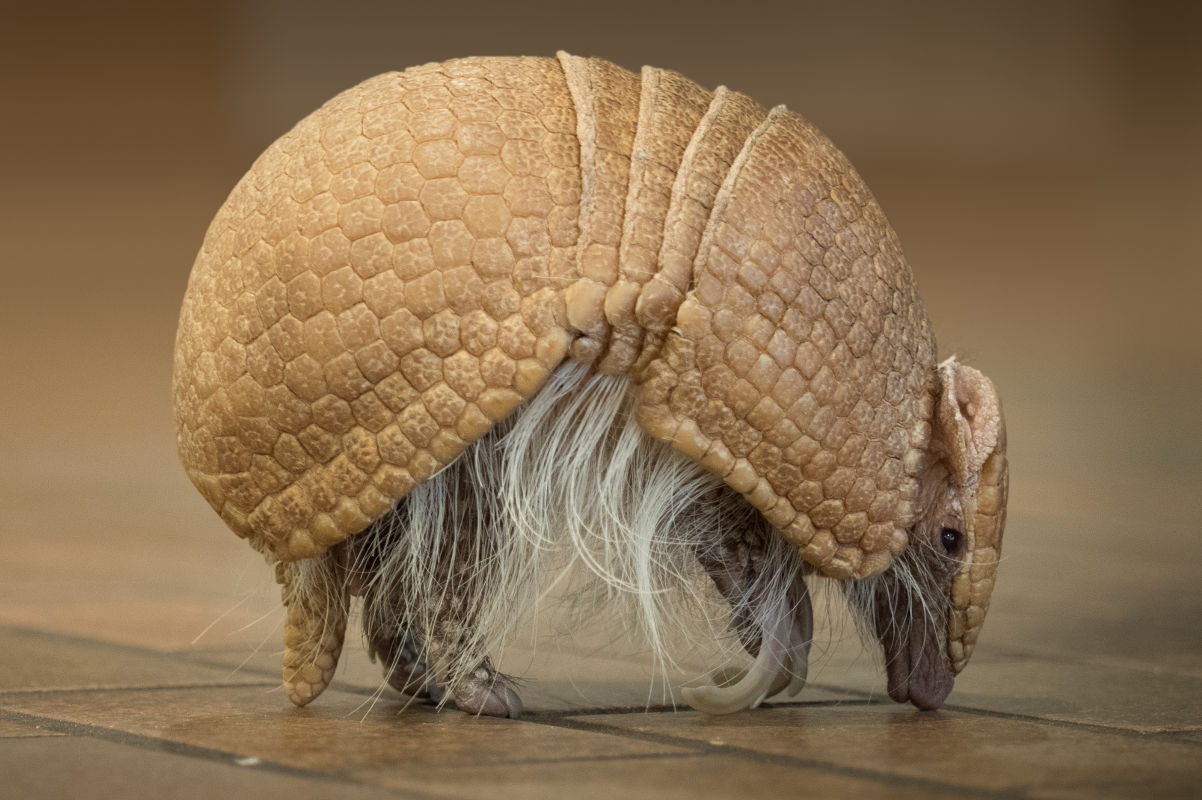
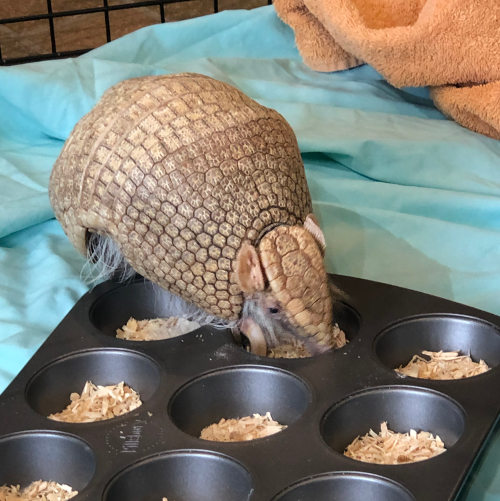
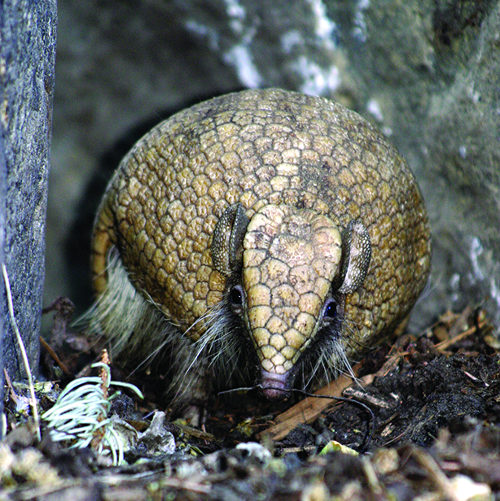
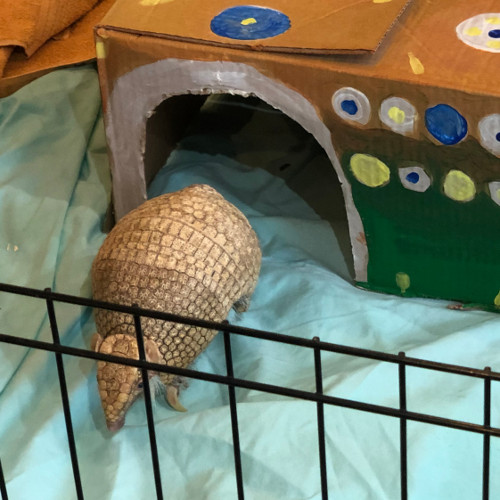
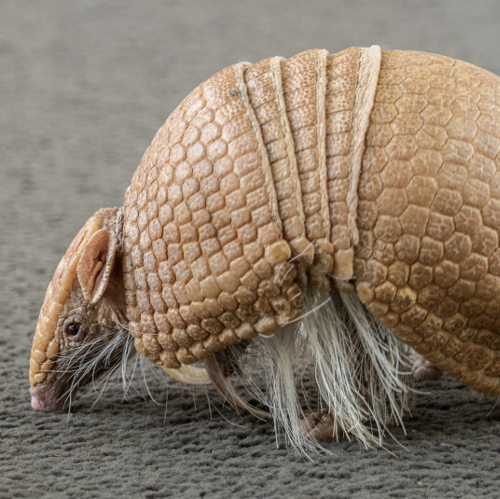
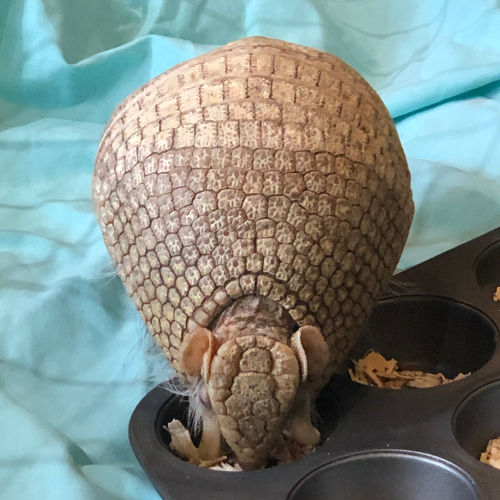
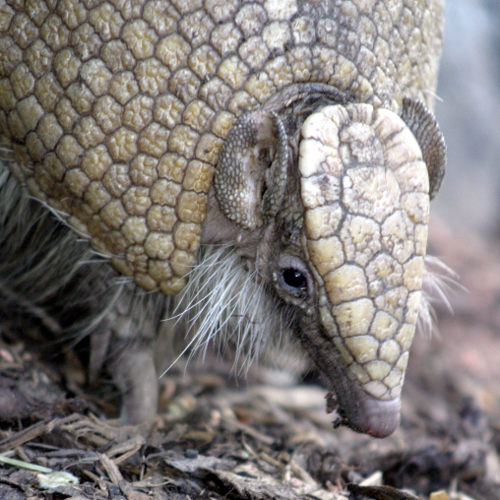




Armadillos have scutes, a natural armour of movable bony plates covering their backs, heads, legs and tails. The bony plates are covered by thick, hard skin.
Though there are 20 species of armadillos, the three-banded variety is the only one that can roll itself into a ball as a defense mechanism against predators. The others dig a hole and hunker down to protect their soft body parts. The shell also helps protect them from thorny vegetation that is abundant in their natural habitats. Under the surface, armadillos have soft, hairy skin.
Armadillos have a great sense of smell. In addition to finding food, they use their noses to determine the identity of other armadillos, as well as their readiness to mate. Three-banded armadillos differ from other species of armadillo, as they do not dig their own burrows. Instead, they used abandoned burrows made by anteaters. They do, however, use their long, sharp front claws to dig into termite mounds or to open tree bark to snack on the insects inside.
The Edmonton Valley Zoo is home to a three-banded armadillo named Scarp.
CLICK THROUGH THE TABS BELOW TO LEARN MORE!
Three-banded armadillos generally weigh about 1.5 kg (3 lbs). Their bodies are around 30 cm (12 inches) with a 6 cm (2.5 inch) tail.
All armadillos live in Central and South America except for the nine-banded armadillo found in the southern United States. Three-banded armadillos live in the open grassy areas, forests, and marshes of Brazil, Paraguay and Argentina.
Armadillos are omnivores. They primarily eat insects caught with their long, sticky tongues; also eat plants, eggs, and small animals.
They are timid, solitary creatures but get together to mate or keep warm. They sleep up to 16 hours a day in burrows when not foraging for food.
Breeding is believed to take place between October and January. After a 120-day gestation period, females give birth to one pup that matures and becomes independent within 4 months.
Between 15-20 years.
Armadillos are vulnerable to predators such as coyotes, bobcats, mountain lions, some raptors and even domestic dogs.


